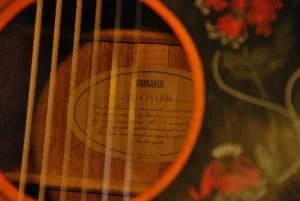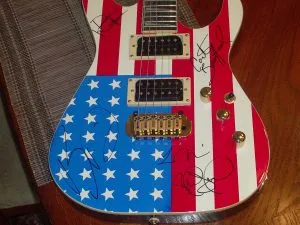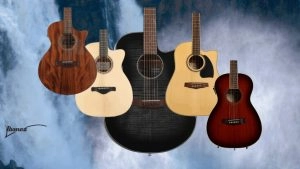While the major scale gets a lot of attention from beginner guitar players, learning the 12 minor scales is equally important.
Learning minor scales on guitar is important because they are:
- Used in a wide variety of musical styles.
- Essential for understanding and creating melodies and harmonies
- Necessary to fully understand the music theory behind chord progressions, improvisation, and general musical phrasing.
I wasn’t a huge fan of learning minor scales because they sounded sad, and I had a hard time hearing how the minor scale notes fit into chords and melodies. But as you continue to study them and fully grasp the minor scale formula, it becomes clearer how it works across different genres and music theory.
Remember, your guitar learning journey is limited without a complete foundation of scales — both minor and major — your guitar learning journey is limited. So, while it may seem boring at first, give it time because it will get better!
This article explains the theory behind the minor scale, the best ways to practice it on the guitar, and some very nice tricks to make learning this scale much easier.
Understanding the Minor Scale Formula
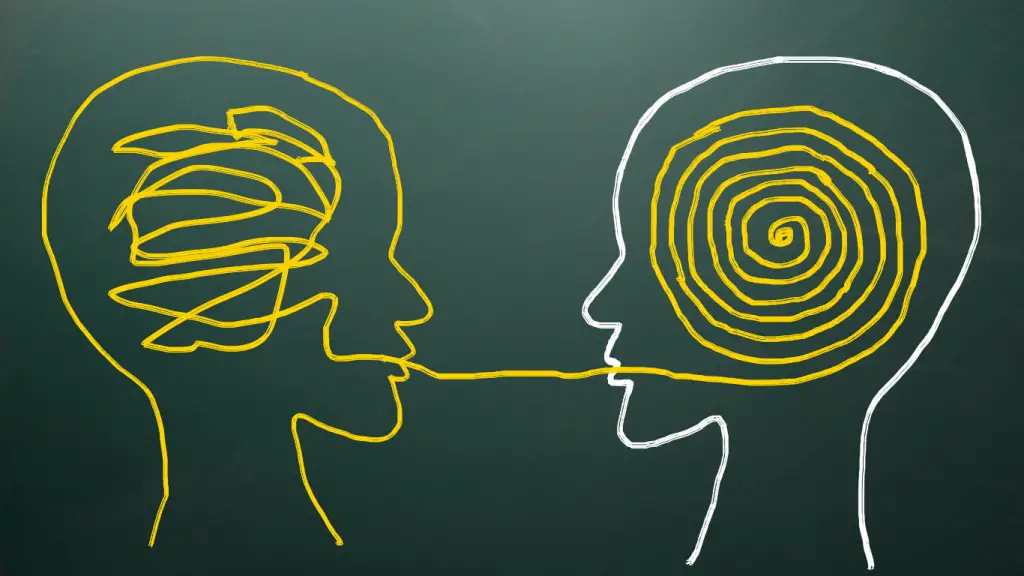
You must understand the minor scale formula before jumping into fretboard diagrams and applying it in your lead guitar playing.
The minor scale uses seven notes plus the octave for eight total notes. You can start on any root note and run a minor scale using its formula.
So, if we started on the third fret of the fifth string — a C note — you can play the C minor scale. Unlike the C major scale, a minor scale has a minor third (Eb), a minor sixth (Ab), and a minor seventh (Bb).
A C minor scale (also called a C natural minor scale) runs C (root note) — D — Eb — F — G —Ab — Bb — C (octave).
A D minor scale consists of D — E — F — G — A — Bb — Cb — D.
You can also think the structure of the minor scale in terms of a whole-step-half-step pattern.
On the guitar, a whole step is two frets, and a half step is one fret. The minor scale pattern is a combination of whole steps and half steps that looks like this:
Root — Whole — Half — Whole — Whole — Half —Whole — Whole (root one octave higher).
Minor Scale Steps On Guitar
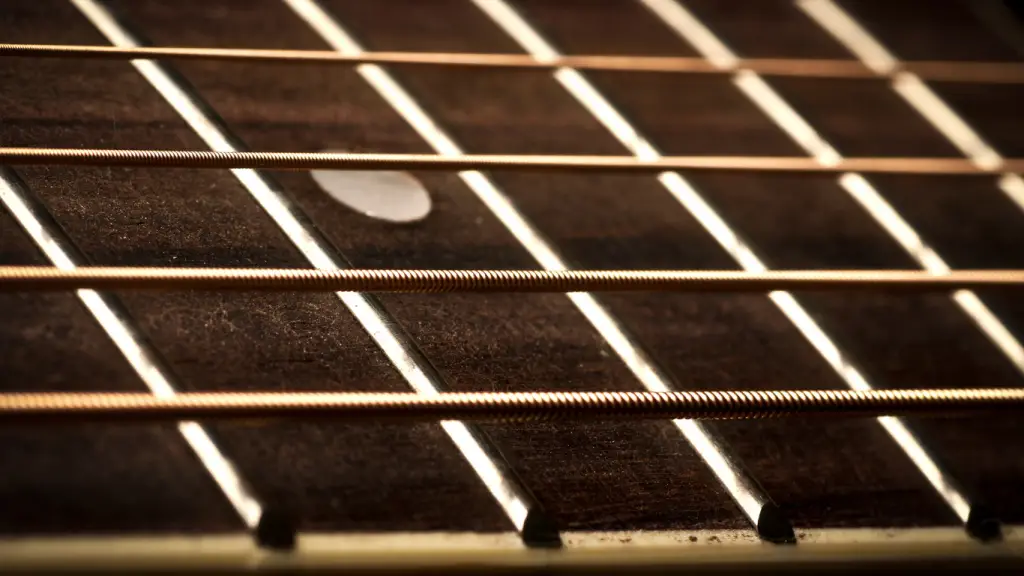
It’s easier to visualize the minor scale pattern of whole and half steps directly on the guitar because — as mentioned — each fret is a half step and every two frets is a whole step.
So, if you’re playing a minor scale on one string of your guitar, start with any root note and then move up by two frets for the second note; one fret for the third note; two frets for the fourth note; two frets for the fifth note; one fret for the sixth note; and two frets each for the seventh and eighth (octave) note.
Start your minor scale journey by playing on a single string, running it from root note to root note. You need to learn to play these scales across all six strings and all different positions on the fretboard but start with the basics, and you’ll be there in no time.

Minor Scale Intervals
Like its major scale counterpart, minor scales can also be understood in terms of intervals, which are the distance between two scale notes.
The minimum distance between two notes is a semi-tone, which is equivalent to one fret on the guitar.
Let’s take G minor, for example:
- Unison (Root): G
- Major 2nd: A (two half steps away from G)
- Minor 3rd: Bb (three half steps away from G)
- Perfect 4th: C (five half steps away from G)
- Perfect 5th: D (seven half steps away from G)
- Minor 6th: Eb (eight half steps away from G)
- Minor 7th: F (ten half steps away from G)
- Octave (Root): G (twelve half steps away)

Understanding these intervals will help you better learn and understand guitar interms of both scales and chords.
For example, when you need to play a Gm chord, you know it is composed of a minor third — Bb — and a perfect fifth (D). Or if you see a Gm7 chord, you know it includes that minor third plus the minor seventh (F).
To best understand intervals, run your minor scales starting from each of the different notes of the scale instead of only playing from root note to octave.
As you become well-versed in the natural minor scale, you can expand to other minor scales, including the harmonic minor scale. Harmonic minor scales have the same notes as the natural minor scale, but the seventh interval is major instead of minor. So, a G harmonic minor scale has an F# instead of an F natural.
The CAGED Minor System

Like the major scale, there is also a CAGED system for minor scales. The CAGED system helps you not only learn the 12 minor scales but also better visualize the fretboard and develop a better understanding of scales and chords.
The CAGED acronym refers to the five consecutive scale positions — each of which contains an open chord shape on guitar: C, A, G, E, and D. Note that the chord shapes in the CAGED minor system are open minor chords — not major chords.
As you learn each one, you can play any minor scale across any part of the fretboard once you learn the minor scale shape of each key.
CAGED System Example
This section of the article will focus on an example of the CAGED system using the A natural minor scale. The notes of that scale are A — B — C — D — E — F — G — A.
A minor is the relative minor scale of the C major scale. That means they share the exact same notes.
Open position (A position)
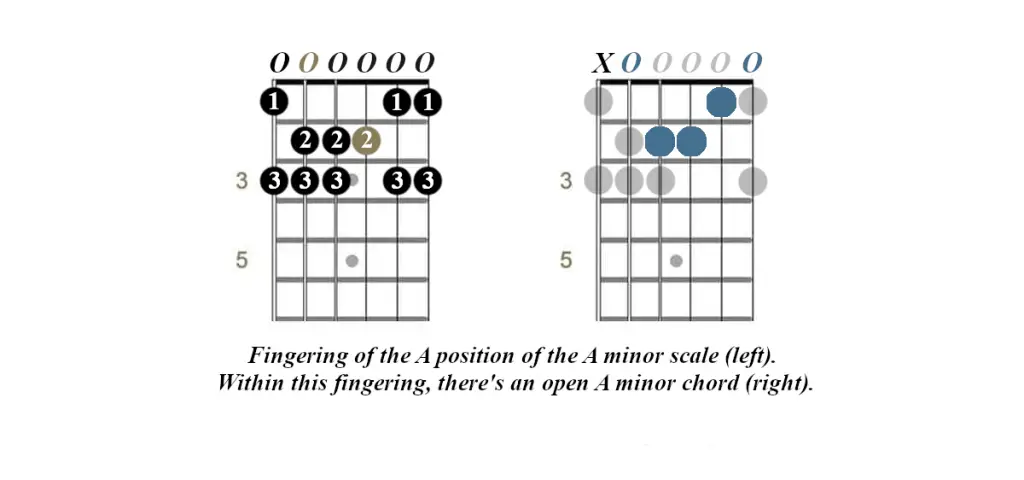
The open position of the A minor scale is the “A” in the CAGED system. You’ll start by forming an Am chord at the bottom of your fretboard in what’s known as the open position. Use the diagram above to run the scale from the sixth string to the first string.
In this example, you’ll actually start with the open E string and end on a G note on the third fret of the first string.
The diagram below identifies each interval in that position of the scale.

Position No. 2 (G Position)
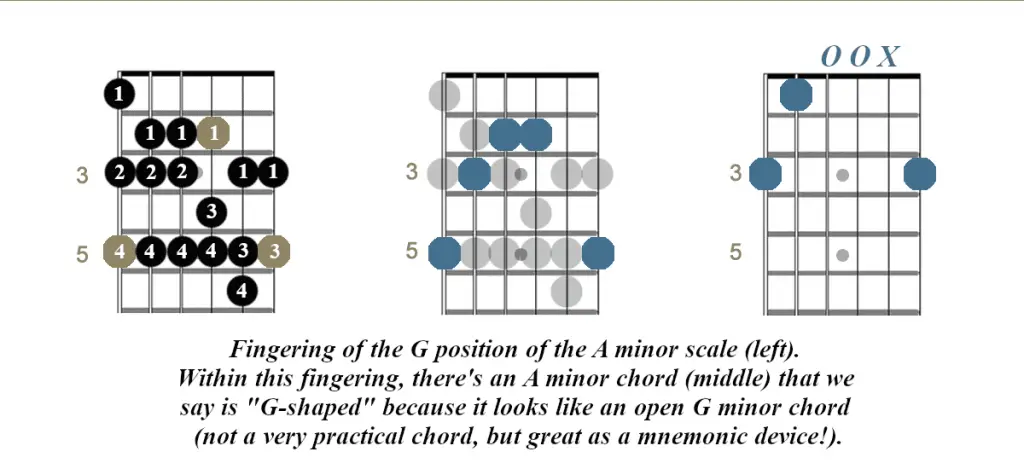
The second position of the A minor scale is the G position, which requires you to create an open G minor chord shape.
We’re quite used to shaping a G major chord, but (perhaps) aren’t as familiar with an open Gm chord. You won’t play this chord very often, but it’s a useful mnemonic device to help you visualize this particular minor scale shape.

Position No. 3 (E Position)
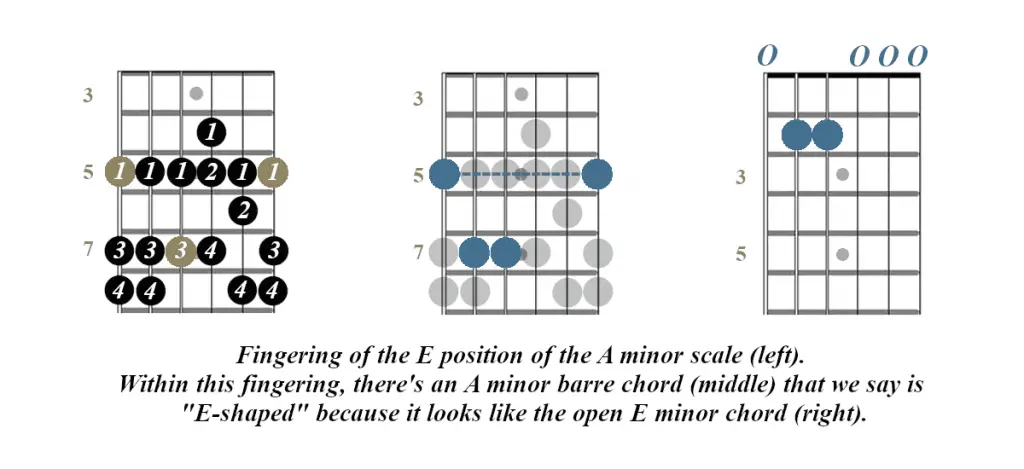
The third position of the A natural minor scale is the E position. The best way to think about this position is by forming an A minor barre chord.
You will start on the root of the scale on the fifth fret of the sixth string (A) and end on the eighth fret of the first string (C).

Position No. 4 (D position)
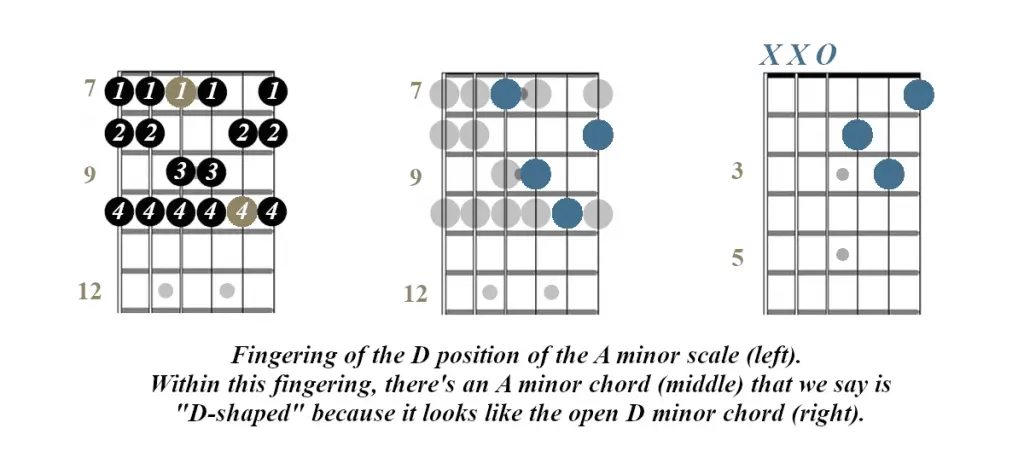
You will form a D minor chord near the middle of the fretboard when practicing the fourth position, also known as the D position.
If you follow the diagram, you will hit the root notes of the A natural minor scale on the seventh fret of the fourth string and the tenth fret of the second string.
In my opinion, this is not only one of the more accessible positions to learn, but it’s also a great position to master solos in A minor since you’re up higher on the fretboard.

Position No. 5 (C position)
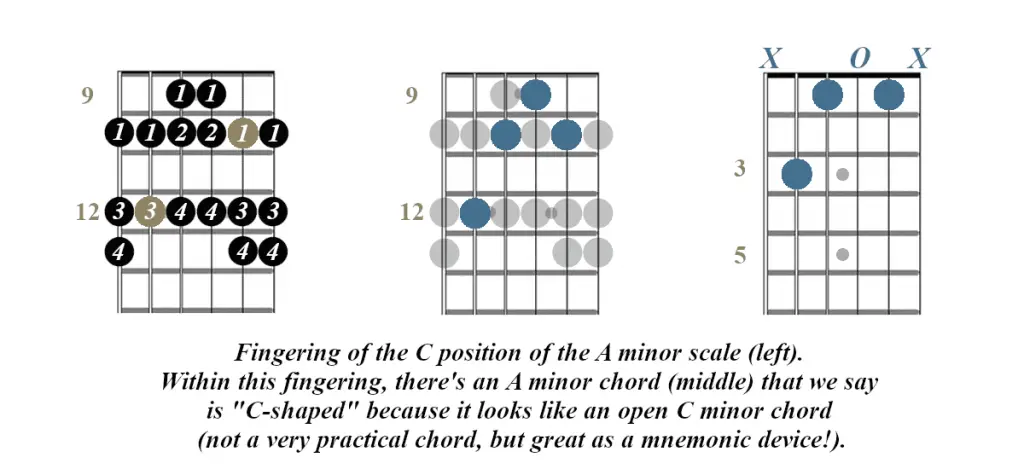
One of the trickier positions is the fifth position, which corresponds to the C position in the CAGED system for visualizing the minor scale shape.
Again, forming a C minor chord is not very natural — especially all the way up near the 12th fret, where frets are a little tighter together.
Still, with some practice, you can perfect this position, which can be truly beneficial for soloing.

Position No. 6 (A Position)

The final — and sixth — position of the A minor scale is actually the A position. You’ll form an A minor chord, just like you did in the first position, all the way up an octave higher.

Now that you’re armed with a general knowledge of the CAGED system to help you visualize any minor scale shape, let’s also run it through the E minor scale and G minor scale shapes.
E minor scale
To play an E natural minor scale using this pattern, start with the E-shaped open position. Position two would be the D position; position three would be the C position; position four would be the A position; position five would be the G position; and position 6 — one octave higher — is the E position.
G minor scale
You can run the same patterns in G minor. The first position is the G position; the second position is the E position; the third position is the D position; the fourth position is the C position; the fifth position is the A position; and the sixth position is the G position.
Remember, each of these positions requires you to visualize an open minor chord shape inside them, not a major chord like you would with a major scale.
Minor Scale Patterns
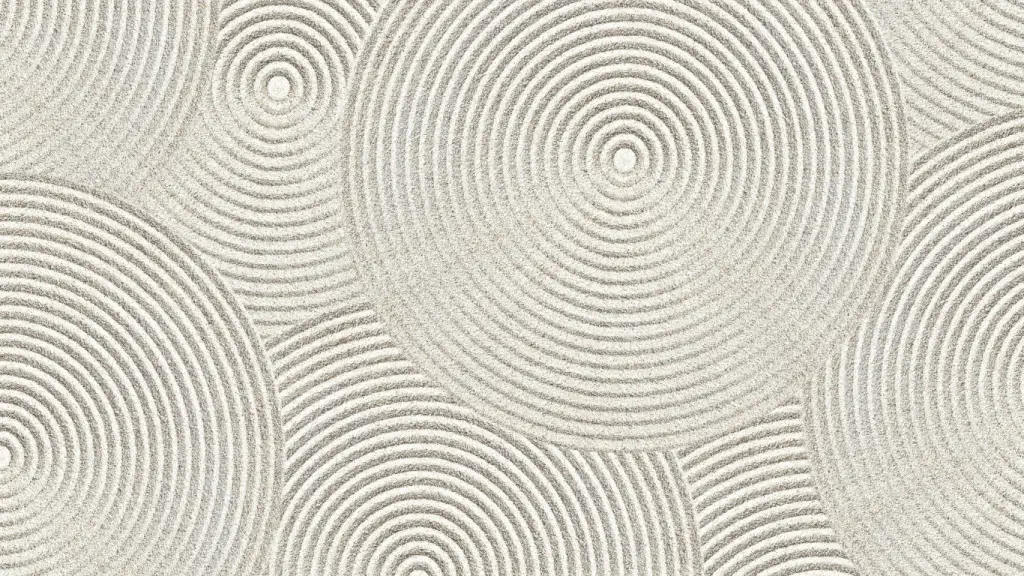
Once you master the CAGED system, you can play any minor scale or from virtually anywhere on the fretboard.
Single Octave Pattern Starting From The 6th String
As I’ve mentioned a lot on this site, running scales across all parts of the fretboard is essential to advancing in your guitar journey. The CAGED system is a great way of doing this, but running single-octave patterns is also very helpful.
Let’s stick with the A minor scale example. All of the diagrams below start on the root note and go up to the octave, but they start at different spots on the fretboard. Practice all of these minor scale positions to develop a better grasp on the scale.
Single Octave Pattern Starting From The 6th String

Single Octave Pattern Starting From The 5th String

Single Octave Pattern Starting From The 4th String
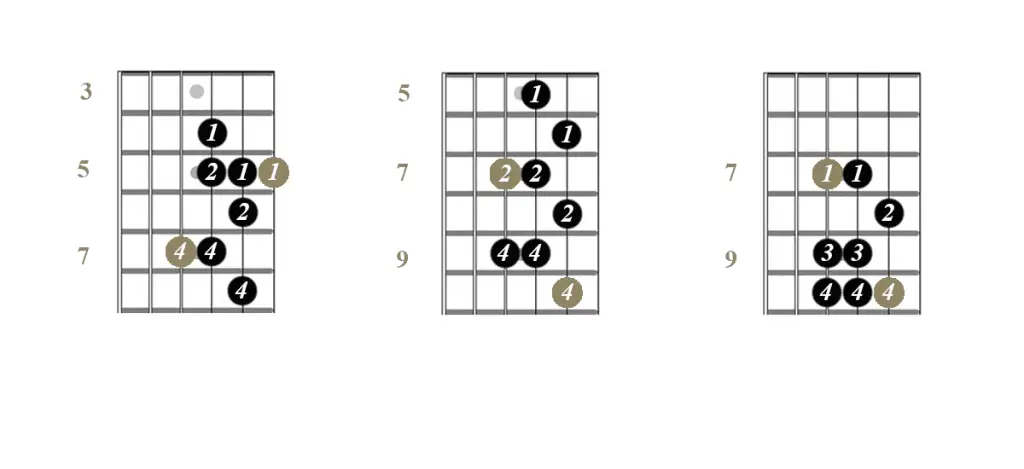
Single Octave Pattern Starting From The 3rd String
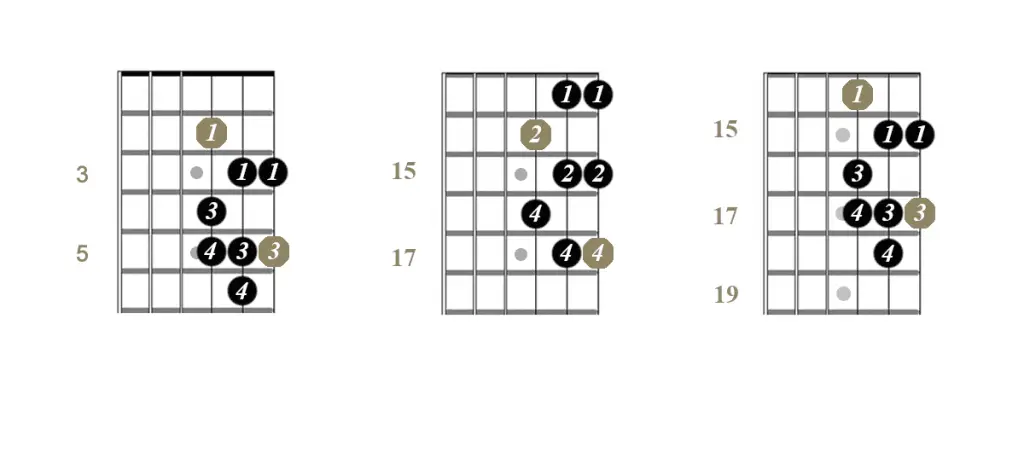
Minor scale guitar exercises
You can find plenty of minor scale exercises on YouTube and in online lessons. Some of my favorite include this one from Guitar Zoom:
This video from Sound Guitar Lessons with Jared provides a few great tips for practicing the different shapes of the minor scale as melodically as possible.
This is something to bear in mind when practicing scales, as we tend to focus too much on building finger muscle memory instead of training our ears:
Chords of The Minor Scale
Every note in natural minor scales is associated with a chord. In the A minor seven-note scale, they are:
- A: Am — A, C, E
- B: B° (B diminished) — B, D, F
- C: C major — C, E, G
- D: Dm — D, F, A
- E: Em — E, G, B
- F: F major — F, A, C
- G: G major — G, B, D
Understanding these chords also helps you understand the relative major scale of each key. In the case of A minor, the relative major scale is C major. (And the relative minor of C major is A minor!)
Frequently Asked Questions

Let’s address some of the most common questions related to natural minor scales on guitar.
What genres is the natural minor guitar scale used for?
The natural minor guitar scale is used in a number of different genres, including pop, blues, rock, jazz and even country — just like its major scale counterpart.
Which minor scale on guitar should I learn first?
There is no one minor scale you should learn first on guitar, but most beginner players start with A minor.
What is the difference between a major and minor scale on the guitar?
The key difference between a major and a minor scale is in how these scales are structured in terms of intervals. Starting from the root notes, the major scale has a major third, major sixth, and major seventh. The minor scale has a minor third, a minor sixth, and a minor seventh.
How many guitar minor scales are there?
There are 12 guitar minor scales — one for each minor key in music.






